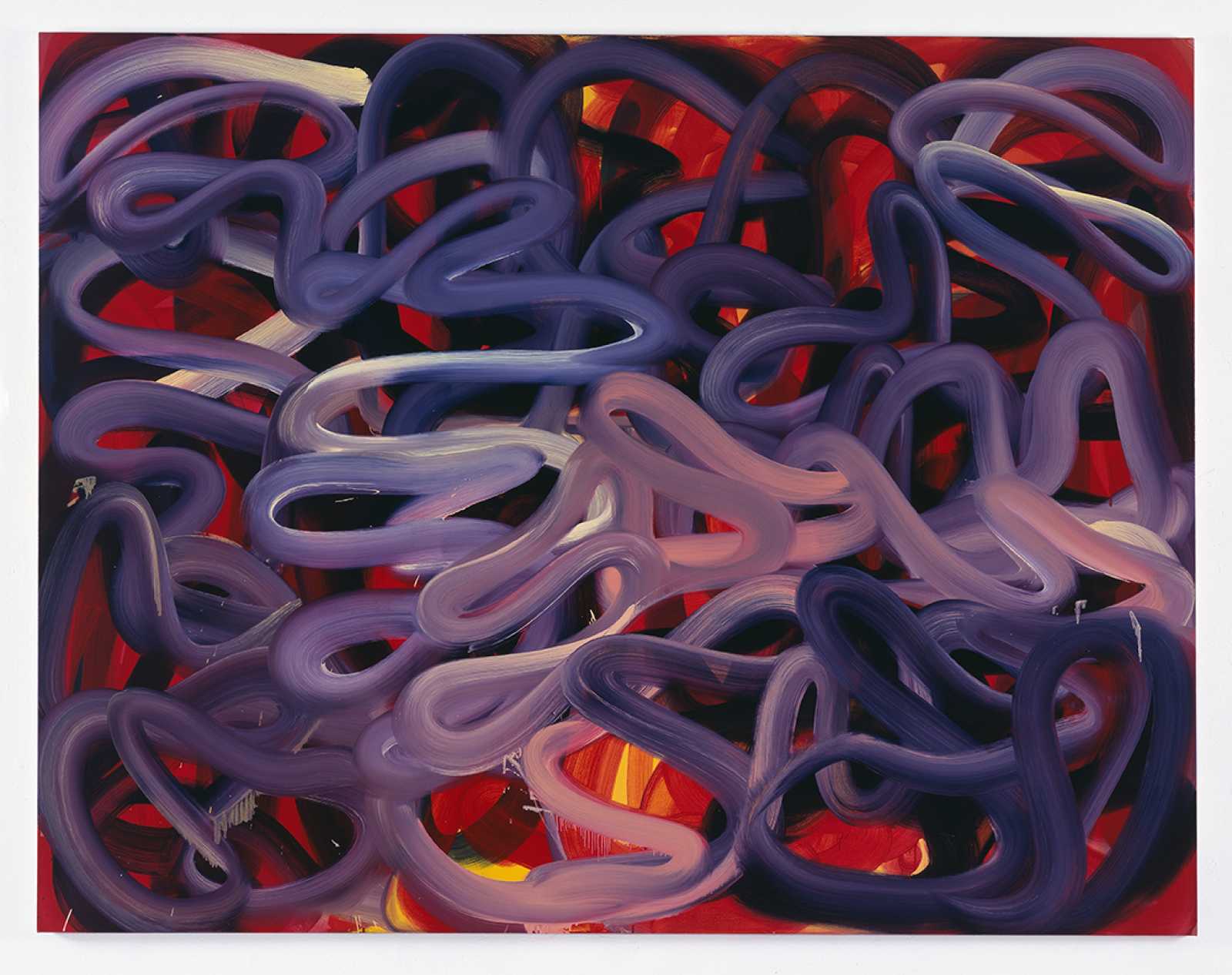Get Inspired by Karin Davie
Karin Davie (Canadian, born 1965), Chinatownblues no 2, 2006, oil on canvas, 84 × 108 inches. Gift of Emily and Teddy Greenspan, 2020.24.
Use expressive gestures to explore rhythm and movement in creating an abstract work of art.
Rhythm is often associated with the beat of music, but it is also a way to describe motion or movement through the use of color, pattern, technique, or brushstroke.
Look at Karin Davie’s painting Chinatownblues no 2. Notice how the swirling lines create a sense of rhythm through the use of color, pattern and brushstroke. Her large gestures create a pattern differentiated by colors that form paths across the work. Also, notice the way your eyes follow her colorful lines and the brushstrokes, creating a sense of direction and motion. The different colors and brushstrokes draw your focus to different parts of the work. This experience creates a sense of rhythm as your eyes move across her work, similar to the way rhythm is formed by a sequence of beats in music
Supplies:
- Paint (or other coloring supplies)
- Drawing paper or canvas
- Cup and water
- Paint brush
- Towel to dry brush
- Paint palette, such as paper plate or non-stick surface like wax paper
- Music is optional, but might help by providing different beats to practice rhythm
Step 1
Select your color palette. You might choose cool colors (blue, green, and purple), warm colors (red, orange, and yellow) or complementary colors (red, yellow, and blue; or orange, green, and violet).
If you are using paints, apply them to your paint palette.
Step 2
Before you apply color to your artwork, practice using your paint brush or coloring implements to create rhythm. Start by moving your brush or implement in small motions with your hands as if they are moving to the beat of music. Then, enlarge your movements by using your arms and body.
Once you have warmed up with movement, think about how you will create rhythm in your work. This might be with color, pattern, technique, or brushstroke. Then apply your first color.
Step 3
Continue to create marks by using movement to work across the canvas. Are they fast or short strokes, or long, sweeping squiggles?\
If you need inspiration, play music and let your movements follow along with the beat.
Karin Davie was inspired by performance and dance. Imagine that you are in motion as you create your art work; how is the paint brush moving across the canvas or paper?
Step 4
After your first few marks, examine your work. Do you get a sense of movement and rhythm? Can you go back and use different colors or patterns to create more rhythm? Adding layers on top of your first few marks will also create a sense of depth.







